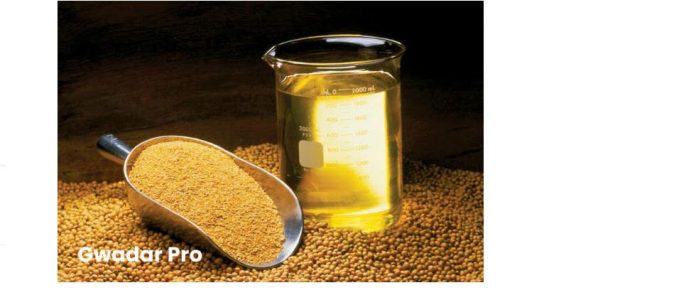DNA
ISLAMABAD, Sep. 29 : A series of reports on maize-soybean strip intercropping technology’s development in Pakistan published by Gwadar Pro lately attracted great attention from farmers, governments and enterprises, which demonstrates agriculture sector’s lively interest in boosting domestic production of soybean.
A report published by Gwadar Pro on Tuesday said, soybean has considerable development potential that may bring huge benefits in return in the future. It is used in a wide variety of foods for humans and animals, as well as for industrial and consumer products such as building materials, lubricants and other household items.
With the development and modernization of poultry and dairy sectors, the demand for soybean in Pakistan has seen strong growth. However, due to lack of the capacity for self-production, Pakistan overwhelmingly relies on imports to meet the increasing demand. USDA (U.S. Department of Agriculture) data shows that between MY 2015/16 and MY 2018/19, Pakistan’s soybean imports have grown by 76.3% in the four years to about 2 million tons.
In 2018/19, Pakistan’s oilseed imports were 3.1 million metric tons (MMT), among them 1.8 MMT of soybeans, accounting for nearly 60% of the total oilseed imports. State Bank of Pakistan (SBP) data exhibits that in FY 2019, the amount of Pakistan’s imports of soybeans, whether or not broken, reached $782,345,000, and the amount of the imports of soybean oil and its fractions touched $105,753,000.
The amount of imports of soybean oilcake and other solid residues plunged from $30,126,000 to $110,000 because Pakistan’s establishing feed industry has shifted to importing whole grain instead of soybean meal.
Soybean crop was introduced to Pakistan in 1960s and commercial cultivation began in 1970-71. Pakistan Agricultural Research Council (PARC) and Provincial Research Institutes in 1977-78 carried out research and eight soybean varieties were developed.
During 1990s, the area under soybean cultivation once touched the highest point at 6,613 hectares, then declined sharply to few hectares without any increase in the following years till today.
Based on various research, soybean production and commercialization in Pakistan is hindered by unavailability of high yielding, climate ready and pest resistant varieties, absence of latest production technologies, skills and knowledge, lack of machinery and insufficiency of marketing of produce and its by-products.
Despite challenges there is huge potential to tap the local soybean production. Soybean crops can be incorporated in existing spring as well as summer pattern. There are various crop rotation combination and intercropping systems.
Especially under intercropping technology, farmers can grow soybean without curbing the cultivation area of existing crops like maize, sugarcane, corn, etc. This technology makes better use of available space to increase the amount of crops that can be harvested on the same area of land as soybean production is like an added “bonus”.
As the all-weather strategic partner to Pakistan, China is lending a hand in stimulating Pakistan’s soybean production via introducing the advanced maize-soybean intercropping technology to Pakistan from Sichuan Agricultural University.
Included in China’s “No. 1 Central Document” of top-priority by CPC Central Committee and the State Council of the People’s Republic of China, this mature technology has been applied to 4.76 million hectares of land in 19 Chinese provinces and created new economic benefits of RMB 24.5 billion.
This year, mazie-soybean strip intercropping technology has achieved promising results at multiple demonstration plots across Pakistan both under irrigated and rainfed conditions. In Bahawalpur, the yields of soybean and maize in the intercropping plot reach 1,304 kg and 8,596 kg per hectare respectively.
In the near future, assisted by the Chinese government and scientific research institutions, intercropping related high-yielding soybean varieties, pesticides and weedicides, and machinery are going to be brought to Pakistan, and the yields can be raised still further.

















